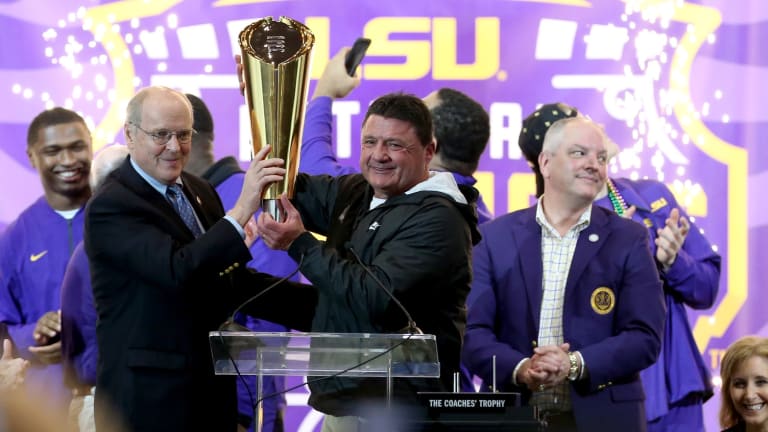
A JERSEY GUY: Can CFB Survive Without Its Fan Base?

The scene has been an annual January event. A newly crowned national champion in football, with a jubilant head coach holding up a trophy while thousands of fans do a victory chant.
Freeze the photo in your brain. We might not see a repeat any time soon--at least with the fans filling their roles in the stadium.
As we move into the second quadrant of what appears to be a year long Covid-19 pandemic world, the debate rages from Minneapolis to Miami, from Tuscaloosa to Tucson on what will the world of college football look like when it returns
Not the game itself. But the atmosphere created by hundreds of thousands of fans, some of them with painted faces, marching bands and a Friday night/Saturday hoopla that is unmatched in its pageantry.
If there is a consensus opinion--and almost everyone has an opinion--it is that the games will resume well before the fans are allowed--or choose to fill stadiums or hold pre-game festivities with tail gate parties.
There are some hard liners in college athletics which flat out state that there will be NO college football without the schools being re-opened and the regular student body is back on campus.
There are also some hard liners in certain parts of the country where college football in the fall is more like a way of life than an event who argue that the games will resume--no matter what the parameters--empty campuses, near-empty stadiums.
Which raises an interesting point. Is college football without fans in the stands such a bad thing on a temporary basis?
Let's take a closer look.
Start with the key aspect? Money. Without the big bucks generated by college football, university athletic programs drop into a dark hole.
And as we move from spring into summer with no clear cut indicator that the Covid-19 pandemic will be under control, it is becoming more obvious that sports--and college football is a prime ingredient---is NECESSARY as a diversion in which the unemployment number are soaring to a 100 year high.
As we have seen on various occasions, as long as the television cameras are rolling, sport--any sport--can be marketed and sold to an audience that is famished for entertainment.
Instead of a filled Sanford Stadium in Athens, Ga. for a Southeasern Conference football game or Notre Dame Stadium in South Bend, Ind., television can produce a product on Flatscreen Stadium that the entire country can enjoy.
Keep the camera angles tight, fill in some studio created crowd noise and offer close ups of the players and coaches on the sidelines and any event can be successfully changed.
And in the risk-reward world we now live in which will require facial masks, gloves, temperature checks, spacing between seats and the unknown and terrorizing knowledge that virus cans spread among thousands of unsuspecting victims in a matter of days, a question of whether fans will CHOOSE to come back remains valid and relevant.
The National Football League has already announced its upcoming 2020 regular season schedule and is preparing for a September start.
But the NFL has made it clear that it is prepared to move on WITHOUT fans in the stands.
College football isn't there yet and with a six week lag time between the start of practice and the start of a football season, the deadline for September start is rapidly approaching, especially if you add in the requirement that schools must also be reopened.
The easy way out which be to concede the rest of the calendar year to recovery and pick up the pace in 2021 when there is a reasonable assumption that a vaccine can be discovered, tested and distributed.
Those plans are already being worked upon. But the push for September and the fall continues, with as much resignation (that it won't happen) as anticipation.
And that presumes we can get a mutual agreement by the 5 major Power 5 conferences on the ground rules which will be used.
What is accepted in Tuscaloosa won't necessarily work in Los Angeles.
College football WILL BE back, but the atmosphere around the game wll feel a whole lot different.